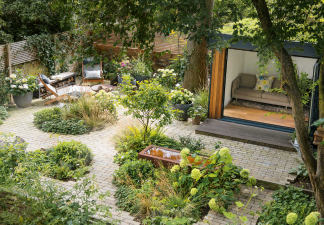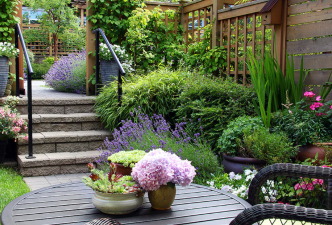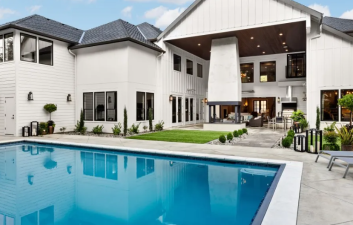How to Create a Low-Maintenance Garden
What is a low-maintenance garden? It's easy to understand. It's about planting plants that are easy to grow and maintain, requiring little time and effort.
It's perfect for busy and inexperienced gardeners. How do we get started gardening? How can we keep our garden looking great without requiring much maintenance?

So how do you create a low-maintenance garden?
- Plant Selection: Ideally, choose plants that are suitable for your area.
The first rule of a low-maintenance garden: Make sure your plants have a suitable home. Before purchasing plants, it's best to know where you'll be placing them. Choose varieties that won't overgrow your space or outgrow the area.
Some plants form small clumps and stay put, while others may spread wildly. Of course, you can always move the plants later, but that's one more thing to do, right?
Understand your garden's soil and light conditions, whether your plants prefer shade or sun, and choose plants that thrive in those areas. Your soil is the foundation of your garden, so be sure to know what type you have.
Or, choose plants that are easy to care for—plants that are known to be easy to grow and hardy. They adapt well to any environment and rarely get sick or infested with insects. Plants like jasmine, bougainvillea, ferns, geraniums, and wood sorrel can be found in many places. They're not picky and easy to care for. Choosing these plants will allow you to easily enjoy the ultimate joy of gardening.
- Choose plants that bloom frequently.
Some flowers, while incredibly beautiful, don't bloom for long, requiring frequent fertilization and pest control. These are the kinds of flowers that require a lot of care, like lilies, tulips, and climbing roses, which only bloom for one season. These aren't cost-effective. However, some plants are inexpensive, bloom remarkably frequently, and are truly exceptional bloomers. They're also rarely susceptible to disease or infestation, like wood sorrel, bougainvillea, and geraniums. They can bring us endless joy. Therefore, choosing plants that are hardy, easy to care for, and love to bloom will allow you to enjoy blooms early, overflowing pots, and easily cut flowers for use – all of which can feel particularly rewarding.
- Use Shrubs and Meadow Plants
Shrubs are very easy to maintain and provide a four-season presence in your garden. Meadow plants are often native and thrive in the area. Examples include:
Dwarf/compact shrubs: azaleas, barberry, cypress, hydrangea, juniper, lilac, rose, pine. Meadow plants: asters, coneflowers, evening primrose, dianthus, daisies, poppies, coreopsis.

How to Plan Your Garden
- Planning the Layout
Start by considering the placement and layout of your garden. Explore your area to determine which areas receive the most sunlight and water so you can plan what plants you'll need. Landscaping Tip: Plant in odd numbers of the same species: 1, 3, 5, 7, etc. This creates a fuller, more attractive appearance. Odd-numbered plants are more vibrant and aesthetically pleasing than even-numbered ones.
- Consider Plant Size and Spacing
When looking at plants, keep in mind their size and where you plan to arrange them in the garden. You don't want to overwhelm the garden with tall plants, and short plants won't give you the variety you desire. You also don't want to overshadow smaller plants with very large plants.
Note: Plant sizes on labels should be used as a guide, not a 100% guarantee. The size a plant grows to ultimately depends on location, weather, and soil conditions.
- Mulch
Mulch helps maintain your garden when it comes to weeding and watering. When you add a 2-inch layer of mulch around plants, it blocks most of the sunlight from the soil and prevents weed seeds from germinating. It also helps retain moisture in the soil. Be sure to cover 1-1.5 inches from the base of the plants. Choose a mulch type, such as gravel and wood chips in a variety of colors.
Make Watering Easy
Even if you don't have time, a drip irrigation system like the Proven Winners WaterWise kit can provide watering. Add a timer and everything will be automatic. Another easy way to water is with a soaker hose. Place the soaker hose beneath the mulch. If you prefer to water yourself, use a water wand to extend the reach of the hose nozzle and soften the water flow. It's best to water early in the morning and at the base of the plants.


